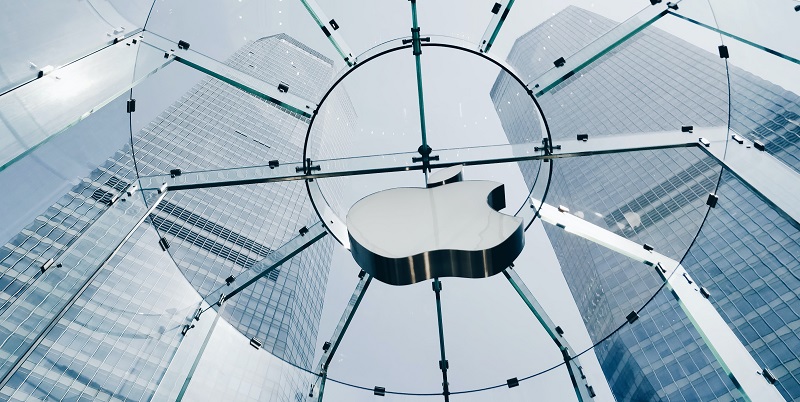In recent years, Apple has been making remarkable strides in the field of artificial intelligence (AI), with a particular focus on generative AI. At the forefront of this endeavor is John Giannandrea, Apple’s AI chief, who is leading the development of large language models within the company. Under Giannandrea’s guidance, Apple is delving into the realm of conversational AI, aiming to leverage its potential in various applications. This article explores Apple’s advancements in generative AI, specifically its chatbot development, internal projects, integration with Siri, and the future outlook.
Apple’s internal chatbot
Apple’s engineers have been buzzing about an internal chatbot, unofficially referred to as “Apple GPT.” While the moniker won’t be the branding for any consumer product, it captures the essence of the advanced chatbot technology Apple is working on. This chatbot is being developed to enhance user interactions through natural language processing and understanding. The intention is to provide users with improved assistance and support within Apple’s ecosystem.
Ajax: The Next-Generation Chatbot
One significant development in Apple’s chatbot endeavors is the creation of Ajax, a cutting-edge next-generation chatbot. Built upon the success of its predecessor, ChatGPT 3.5, Ajax has been trained on an astounding dataset of over 200 billion parameters. This extensive training equips Ajax with superior capabilities in understanding and generating human-like responses, paving the way for more sophisticated interactions and enhanced user experiences.
Investment in Conversational AI Research
Apple’s commitment to conversational AI research is evident in its substantial financial investment. Training language models, such as Ajax, demands considerable computational power and resources. Reports suggest that Apple is spending millions of dollars per day on AI research, emphasizing its dedication to developing state-of-the-art language models that push the boundaries of generative AI technology.
Integration with Siri
One potential application for Apple’s advancements in generative AI is the integration of these capabilities into its renowned voice assistant, Siri. Bringing the power of generative AI to Siri could revolutionize the way users interact with their Apple devices. Users may experience more natural and context-aware responses, enabling Siri to handle complex queries and perform tasks more effectively. The integration of generative AI could further solidify Siri’s position as a market-leading voice assistant.
Privacy concerns
While the implementation of generative AI in Siri holds immense potential, Apple must navigate privacy concerns associated with this technology. Generating human-like responses requires access to vast amounts of data, which raises questions about data privacy and security. Apple’s commitment to user privacy has always been paramount, and any integration of generative AI into Siri would undergo careful scrutiny to ensure data protection remains a top priority.
Restrictions on AI Tools
Apple has taken a cautious approach to AI tools within its organization. In an effort to maintain data security and confidentiality, Apple has imposed restrictions on the use of external AI tools, including ChatGPT and GitHub Copilot. By internally developing and refining their own AI technologies, Apple can maintain greater control over the security and privacy of their systems.
AI Development in the Tech Industry
Apple’s dedication to AI development is in line with that of other major tech companies. Virtually every industry player recognizes the immense potential of AI and is investing significant resources to create innovative AI products. Apple is well-positioned in this landscape, competing alongside industry giants to shape the future of AI technologies.
Existing Use of AI by Apple
It’s worth noting that Apple has already incorporated AI and machine learning into a multitude of functions within its products. From facial recognition to natural language processing, AI has enhanced various aspects of Apple’s ecosystem. Apple’s commitment to AI goes beyond generative AI, and its expertise in utilizing AI technologies is evident throughout its product lineup.
Future Outlook for Generative AI
According to industry reports and analyst Jeff Pu, Apple is expected to introduce some form of generative AI feature on the iPhone and iPad by late 2024. While details are scarce, this development indicates Apple’s drive to make generative AI more accessible to its user base. The integration of generative AI into consumer devices could elevate user experiences and revolutionize the way we interact with technology.
Apple’s dedication to AI development, particularly in generative AI, signifies its investment in shaping the future of intelligent technology. Led by John Giannandrea, Apple’s AI chief, the company’s focus on developing advanced chatbot technology, investing in conversational AI research, and exploring integrations with Siri, highlights its commitment to revolutionizing user experiences. As Apple continues to refine its generative AI capabilities, users can look forward to a future where their interactions with Apple devices are more seamless, intuitive, and personalized.

